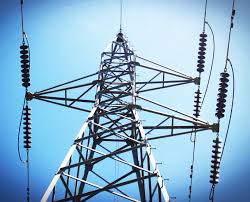 by Ivy Main, cross posted from Power for the People VA
by Ivy Main, cross posted from Power for the People VA
[Note: This post originally appeared in the Virginia Mercury on July 23. Virginia Mercury is a nonprofit, independent online news organization that launched just this summer. Subscribe to its free daily newsletter here.]
Imagine that you have hired a builder to design and build a three-story house for you. He brings you the plans for the first floor and proposes to start work right away. “These look okay,” you say, “but I need to see the plans for the whole house.”
“Don’t you worry about that,” says the builder. “I have it all figured out. I’ll show you the second floor when the first is done, and the third floor after that.”
You argue with the builder, pointing out that as it is your money, you have the right to assure yourself the result will be what you want. If you haven’t even seen the blueprint for the whole house, how can you approve the ground floor? Heck, you can’t even judge if all the stuff he wants to put in is actually needed. (It looks awfully expensive.)
“Please,” says the builder, now deeply offended. “I’m an expert. You should trust me.”
If this scenario sounds far-fetched, that’s because you don’t live in the world of Virginia utility regulation. In that world, Dominion Energy Virginia, the state’s largest utility, has just filed a plan with the State Corporation Commission (SCC) to spend almost $1 billion of its customers’ money for the first phase of what it says will be three phases of grid modernization, amounting to $3.5 billion. The company maintains that all the things it plans to do now are necessary to the overall strategy, but it isn’t saying what that strategy is.
“During Phase 1 of the Plan,” writes Dominion Energy Senior Vice President Edward Baine, “the Company will focus on installing the foundational infrastructure that will enable all other components of the Grid Transformation Plan.” That sounds like it ought to lead into a discussion of what the grid of the future will look like, but sadly, the other “components” turn out to be just more spending.
That might in fact be the whole plan: spend money, lots of it. Baine explains the “drivers” of the plan, like recognizing threats to the grid, and he describes how it will “enable” things like new rate structures and integrating renewable energy. But new rate structures and renewable energy integration aren’t actually part of the plan Dominion wants the SCC to approve.
This will make it very hard for the SCC to judge whether the investments are “reasonable and prudent,” as Virginia law requires. Knowing this, Baine argues the SCC shouldn’t impose a cost-benefit test on its plans. Already that position has drawn sharp criticism even from supporters of the legislation that authorized the spending.
Take smart meters, also known as “advanced metering infrastructure” (AMI). Smart meters don’t just measure electricity use, but do so on an hourly or more frequent basis, and they provide two-way communication instead of just one-way reporting to the utility.
Properly designed and deployed, smart meters are central to the grid of the future. Dominion proposes to spend over $500 million to provide all its customers with this advanced technology during Phase 1. Unfortunately, that doesn’t include making full use of their potential.
Where ordinary electric meters mostly just tell the utility how much electricity a customer has used, smart meters provide detailed information that can be used to help pinpoint power outages and spikes in demand. That’s helpful for the utility, but just using them that way, as Dominion proposes, leaves most of the benefits of smart meters untapped.
Justifying the expense of smart meters requires using them to allow customers to control how and when they use electricity, as well as to make the most efficient rate designs and determine how to get the most benefit from solar panels, batteries and electric vehicle charging. That only happens where a utility offers time-of-use rates and other incentives to change behavior and prompt investments by consumers.
Using smart meters this way would result in lower energy use, more customer-investments in solar and batteries, and savings for everyone. But time-of-use rates and similar incentives aren’t in Phase 1, and they don’t look to be part of Phases 2 or 3 either.
Dominion seems to think it can get approval to spend money on smart meters based on how they could be used, rather than on how the company actually plans to use them. Baine notes that smart meters can tell customers how much electricity they’re using in any 30-minute period. “Customers will be able to choose their preferred mode of communication,” writes Baine, “and then receive high usage alerts when their energy usage exceeds a certain level.”
Yes, and then what? Baine doesn’t say.
It’s not just a matter of wanting to take it slow. Since 2009, 400,000 of its customers have received smart meters, Dominion tells us, giving it ample time to try out all these features. It hasn’t.
Merely installing another 1.4 million smart meters isn’t going to lead to grid nirvana.
Grid “hardening” is another example. Physical upgrades in the name of security and resilience make up more than $1.5 billion of Dominion’s proposed spending. This is not grid transformation, it’s the opposite: beefing up the old grid. Most of the proposed investments are the same kind of capital investments Dominion makes routinely, with nothing modernized about it. Unfortunately, Dominion wrote the law to give itself permission to use customer money for grid hardening, so all the SCC can do is ask whether the specific spending proposals are reasonable and prudent.
Again, since Dominion isn’t telling us what kind of grid it is building for us, there is no way to know whether any given project will contribute to it, or even be necessary at all. If the grid of the future will be based on distributed energy, microgrids, and consumer control, we might not need the substation Dominion wants to make into an impregnable fortress. Modern solutions like solar-plus-storage, demand response, and energy efficiency could provide greater resiliency and security at a lower cost.
Of course, we have every reason to suspect Dominion is not interested in building a grid that empowers consumers, lowers energy use and spurs private investment in solar and storage. Its business model depends on keeping control over the grid and getting people to use more energy rather than less. If it can’t do that, it figures, the next best thing is to find ways to spend our money.
The amount of customer money at stake makes the SCC’s oversight role very important. It can insist Dominion lay out its full vision for the grid, demonstrate how each spending item fits that vision, and prove it meets a consumer cost-benefit test. With a little dose of courage, it could even go further, and insist on seeing a plan that makes full use of smart meters, including time-of-use rates and other incentives for efficiency, solar and storage.
The General Assembly, too, has a role to play, by filling a vacancy on the SCC this summer. If legislators are unhappy with Dominion’s cavalier approach to spending, they have one last chance to appoint a commissioner who will side with consumers, and send Dominion back to the drawing board.

 Sign up for the Blue Virginia breaking news newsletter
Sign up for the Blue Virginia breaking news newsletter









